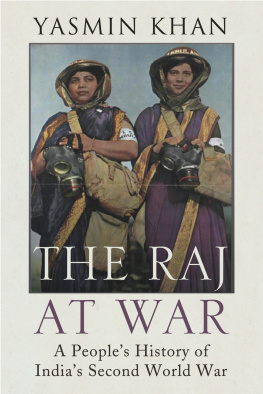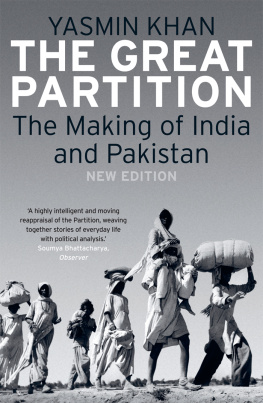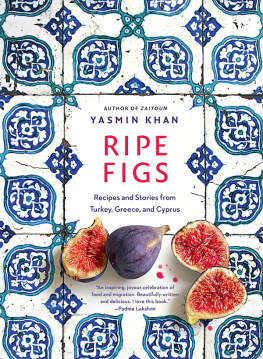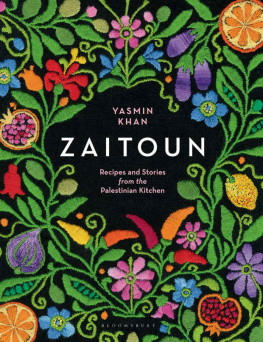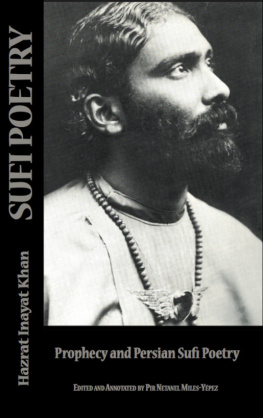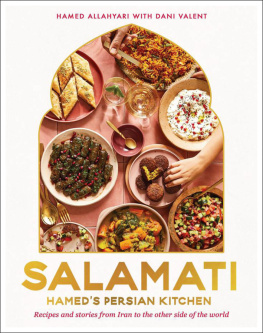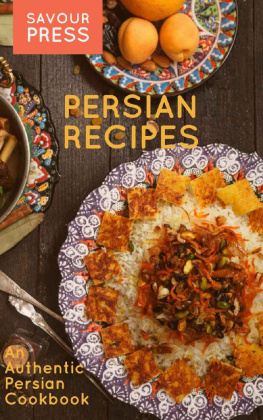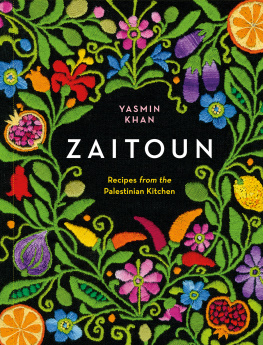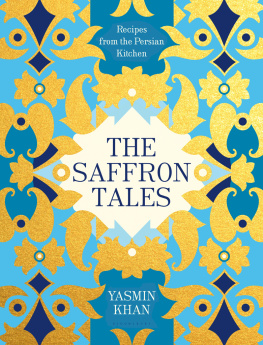Yasmin Khan - The Saffron Tales: Recipes from the Persian Kitchen
Here you can read online Yasmin Khan - The Saffron Tales: Recipes from the Persian Kitchen full text of the book (entire story) in english for free. Download pdf and epub, get meaning, cover and reviews about this ebook. year: 2016, publisher: Bloomsbury Publishing, genre: Home and family. Description of the work, (preface) as well as reviews are available. Best literature library LitArk.com created for fans of good reading and offers a wide selection of genres:
Romance novel
Science fiction
Adventure
Detective
Science
History
Home and family
Prose
Art
Politics
Computer
Non-fiction
Religion
Business
Children
Humor
Choose a favorite category and find really read worthwhile books. Enjoy immersion in the world of imagination, feel the emotions of the characters or learn something new for yourself, make an fascinating discovery.

- Book:The Saffron Tales: Recipes from the Persian Kitchen
- Author:
- Publisher:Bloomsbury Publishing
- Genre:
- Year:2016
- Rating:4 / 5
- Favourites:Add to favourites
- Your mark:
- 80
- 1
- 2
- 3
- 4
- 5
The Saffron Tales: Recipes from the Persian Kitchen: summary, description and annotation
We offer to read an annotation, description, summary or preface (depends on what the author of the book "The Saffron Tales: Recipes from the Persian Kitchen" wrote himself). If you haven't found the necessary information about the book — write in the comments, we will try to find it.
The Saffron Tales: Recipes from the Persian Kitchen — read online for free the complete book (whole text) full work
Below is the text of the book, divided by pages. System saving the place of the last page read, allows you to conveniently read the book "The Saffron Tales: Recipes from the Persian Kitchen" online for free, without having to search again every time where you left off. Put a bookmark, and you can go to the page where you finished reading at any time.
Font size:
Interval:
Bookmark:

For Pedar Bozorg, my grandfather,
who taught me how to eat.
Contents

B EFORE WE BEGIN, Id like to address a sometimes perplexing question: Iran or Persia? Persia was the name given to Iran by the Ancient Greeks several thousand years ago. Since that time, the West has used the term to describe the empire and the country whose inhabitants were called Persians and who spoke the Persian language. However, people inside the country have always referred to it as Iran, a place where Iranians live, who speak their native language, Farsi.
This all changed in 1935 when the Iranian government requested that all foreign embassies refer to their country as Iran.
To Iranians, the name Iran is inseparable from their countrys rich and ancient cultural traditions, which gave rise to one of the worlds most influential civilisations pioneering advances in astronomy, science and medicine, as well as exquisite art, beautiful carpets and architectural prowess. For most non-Iranians, however, Iran has no such cultural connotations and these days is more commonly associated with the countrys recent political history. Because of this, some Iranians prefer to refer to their country as Persia when talking to non-Iranians, particularly when they are discussing something cultural, such as food. I use the words Iranian and Persian interchangeably in this book.

Introduction
When I was little and living in Iran, I used to sob my heart out each morning as my mother got ready to leave for work. Clinging to her legs, I would beg her not to go, and, to appease me, Mum would explain that she needed to go to work to earn money so she could buy me some pomegranates. I practically pushed her out the door when I heard this.
My obsession with pomegranates started early, nurtured by visits to my grandparents farm where I could pick the fruit fresh from the trees. I had a knack for vigorously rubbing the leathered skins of the fruit between my hands, listening to its ruby seeds quietly pop and crunch beneath my fingers, until the pomegranate was soft and pulpy enough for me to tear a hole in one end and squeeze its scarlet juices into my mouth. I dont even want to think about the number of outfits I ruined over the years by being too hasty or clumsy in my efforts.
I was born in Croydon, south London, but my mothers side of the family comes from the sub-tropical shores of the Caspian Sea in northern Iran. Growing up in 1980s Britain, I was always acutely aware of the gulf that existed between the Iran I knew and loved and the Iran depicted on the news. As I got older, this gulf turned into a chasm and my frequent trips to Iran to visit my maternal family were greeted with surprise and intrigue from friends and colleagues alike. With raised eyebrows, people would ask probing questions, fascinated to know how an independent Western woman such as myself could take so much pleasure in visiting a country fraught with controversy and turbulence.
My answer was simple. I loved the exuberance, warm-heartedness and affection of the Iranian people; I loved the dramatic mountains and dazzling scenery of Irans landscapes; and I loved the garlic and herb infused food that harmonised sweet and sour flavours so perfectly.
Shortly after I was born, my grandparents moved to a small piece of land outside Astaneh-e Ashrafieh, a small town in the Gilan province of Iran, and began working the land, growing rice and vegetables for sale in the local markets. They grew pumpkins, squash, aubergines, tomatoes, potatoes, peppers, chillies, garlic, spinach, half a dozen different varieties of beans and countless fresh green herbs, as well as apples, oranges, quinces, blackberries, strawberries, watermelons, cantaloupe, kiwis, greengages, persimmons and loquat. Needless to say, no one ever went hungry at our house.
I remember sitting with my grandmother, cross-legged on the kitchen floor, making jar upon jar of pickled garlic, and being sternly lectured by my uncle, also a rice farmer, on how important it was to cook rice properly so that all the grains stayed separate. But it was my grandfather, Ahmad Rabiee, who really nurtured my love of good food. Pedar Bozorg (which means grandfather in Farsi) was the kind of man who would drive for several hours just to buy a kilo of his favourite oranges when they were in season, or embark on solo hikes through the mountainous terrain of Gilans forests to source pots of his favourite organic honey. One time he poked me and my cousins awake with his walking stick at 6am to share a basket of figs hed just picked from the tree in the front garden. And we knew if we werent up and at the table by 6.05am, hed have eaten the lot.
The inspiration behind this book came from my desire to share the Iran I know and love. Armed with little more than a notepad and a bottle of pomegranate molasses, I traversed more than 3000 kilometres of the countrys rugged landscapes searching for recipes and stories that captured modern Iranian life.
I travelled from the snowy mountains of Tabriz to the cosmopolitan cafs of Tehran, via the rice paddies of the Caspian Sea and the majestic deserts of central Iran, ending up at the tropical fishing ports of the Persian Gulf. On my journey I visited saffron farms and pomegranate orchards, artisan chocolatiers and ancient tea houses, cooking and eating with farmers, artists, electricians and school teachers. As we ate together, the people I met shared the stories behind the food they love and the country they call home, and it is their stories that are interwoven with the recipes in this book.
Some of the recipes are for dishes that have been cooked the same way for thousands of years, others are modern interpretations of Iranian classics, and others still take inspiration from Persian ingredients. Many reflect my personal preference for moving towards vegetarian and plant-based food. At the heart of all of the recipes though is a common thread: a celebration of a side of Iran that never makes the headlines but that is central to its story its amazing food.



A taste of Iran
Persian cuisine weaves together a myriad of delicate spices and elegant flavours gathered from Irans position at the heart of the old Silk Road.
Those unfamiliar with the food often come to the sofreh (the patterned tablecloth on which dishes are served) expecting spicy, fiery flavours, perhaps more befitting the countrys climate and politics, and are often surprised to find that the cuisine is gentle and soothing a poetic balance of subtle flavours such as dried limes, saffron and orange blossom.
Slow-cooked stews known as khoresht and elaborate rice dishes layered with herbs, vegetables, legumes, meat, nuts and fruit are the bedrocks of Persian cuisine, creating a dazzling mosaic of scents, textures and colours at the dining sofreh. There are innumerable different types of
Next pageFont size:
Interval:
Bookmark:
Similar books «The Saffron Tales: Recipes from the Persian Kitchen»
Look at similar books to The Saffron Tales: Recipes from the Persian Kitchen. We have selected literature similar in name and meaning in the hope of providing readers with more options to find new, interesting, not yet read works.
Discussion, reviews of the book The Saffron Tales: Recipes from the Persian Kitchen and just readers' own opinions. Leave your comments, write what you think about the work, its meaning or the main characters. Specify what exactly you liked and what you didn't like, and why you think so.

